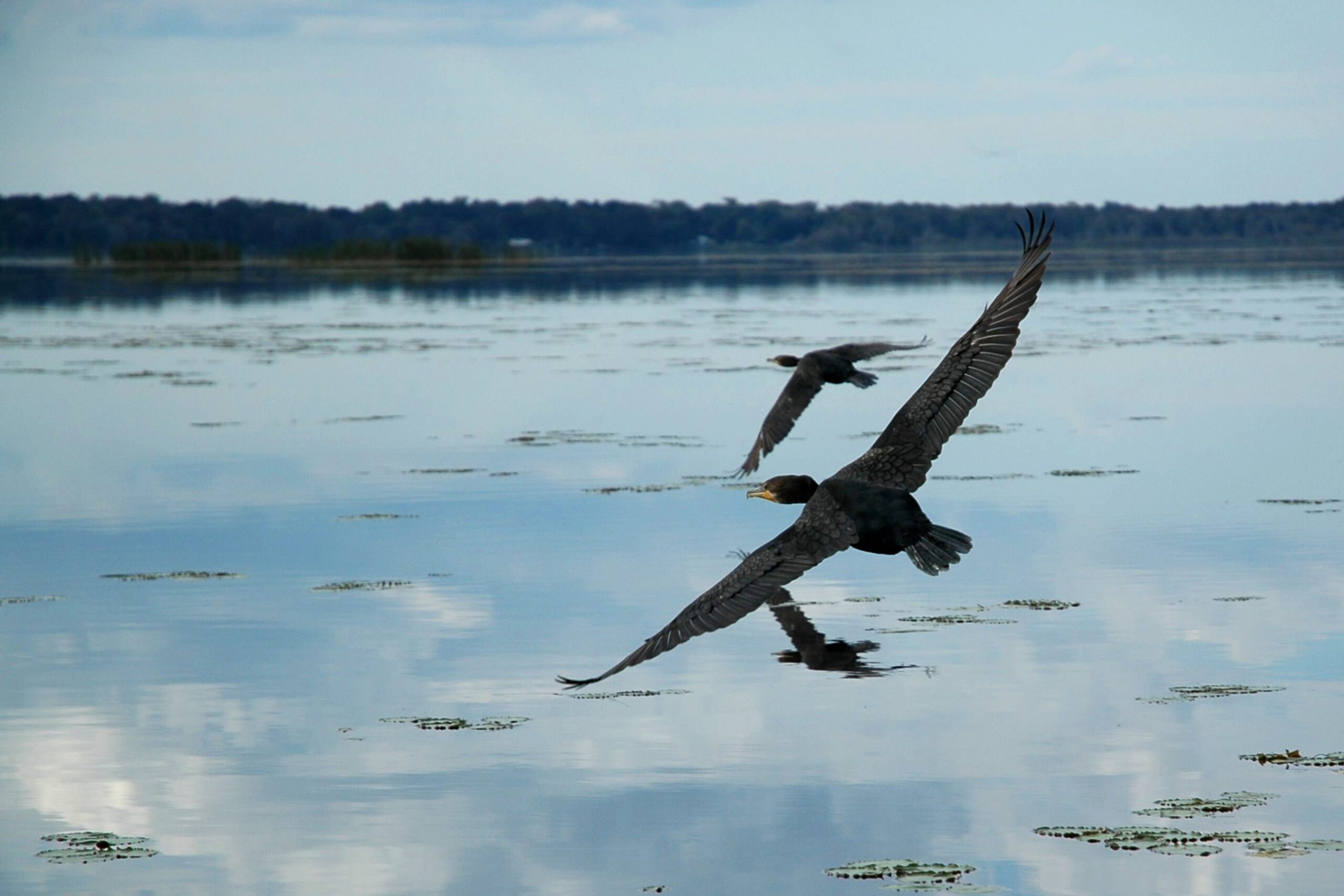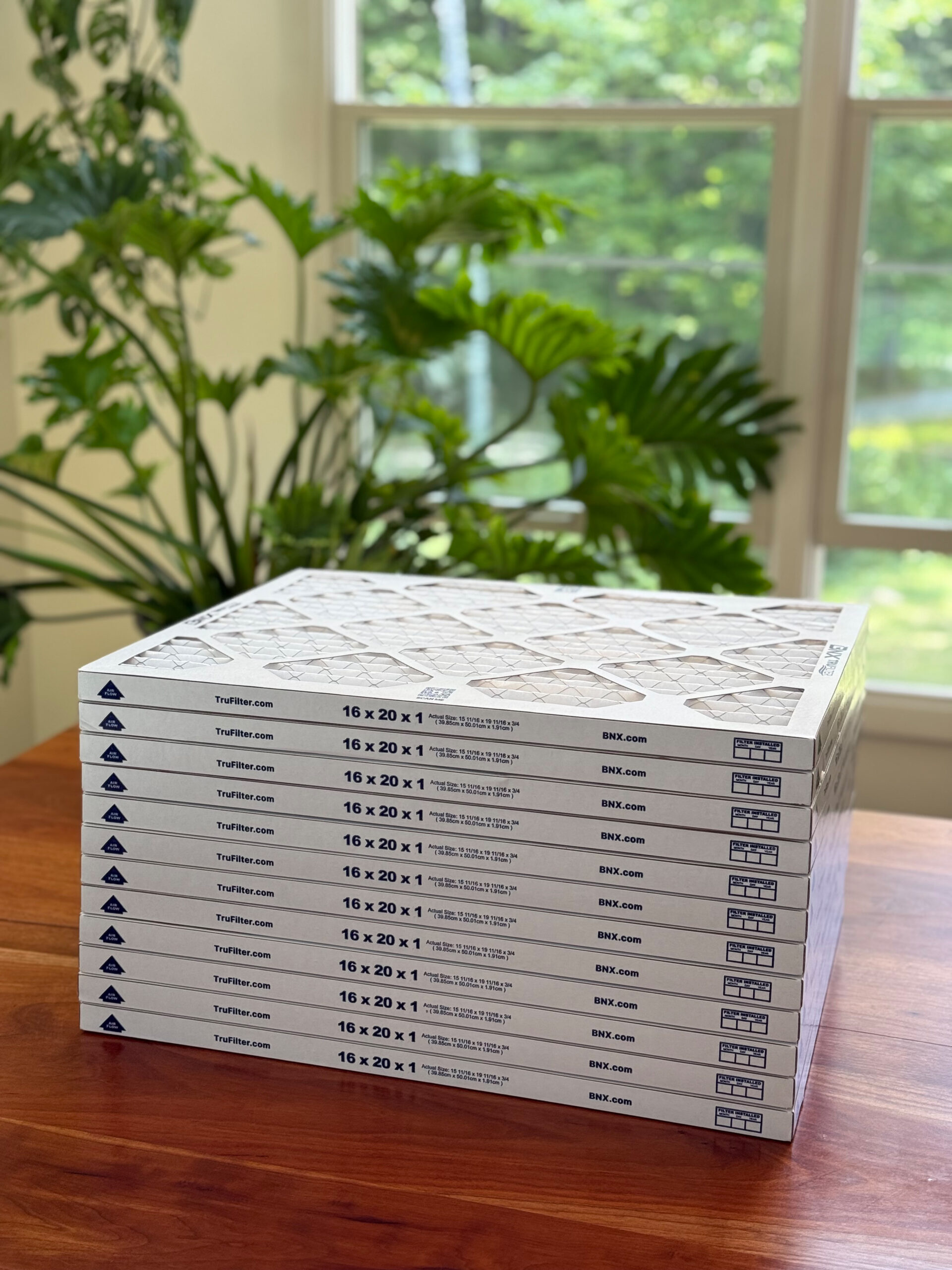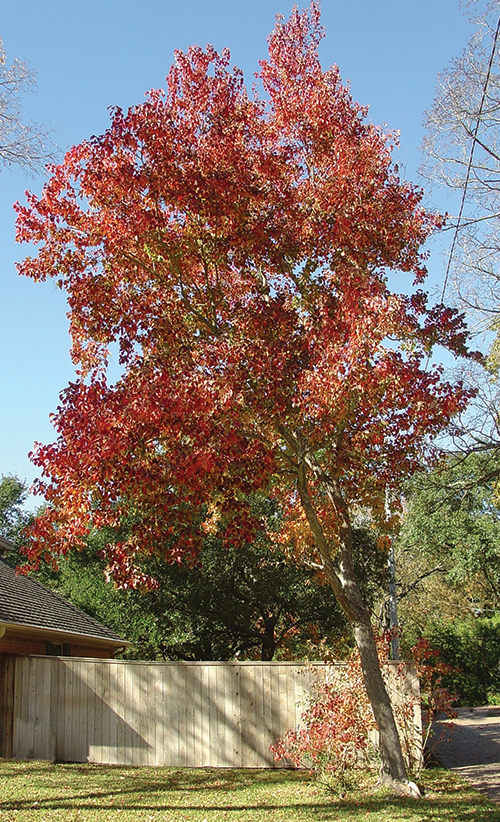Social Media Sensation Kyle Lybarger Helps Us See the Grasslands for the Trees
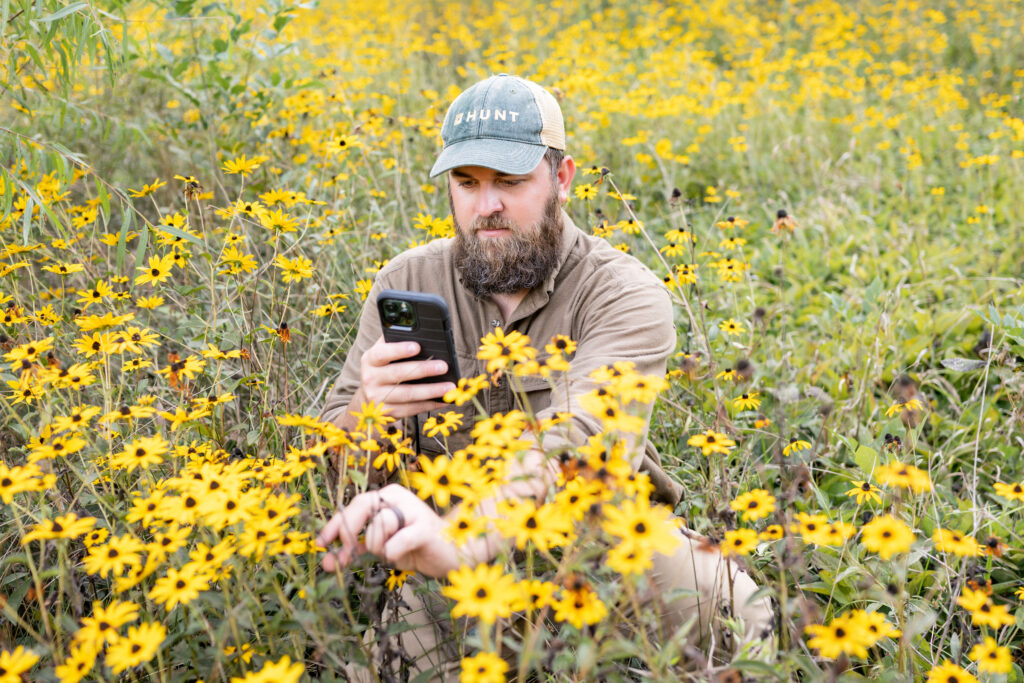
Next time you spot a weedy patch on the roadside, slow down and pay attention. You may be in the presence of an ancient and vanishing Alabama ecosystem or a wildly popular Alabama-based social media celebrity. Or both.
Messy as they may look, overgrown sites such as these can be prime habitat for overlooked and often undiscovered populations of rare and imperiled native plants. They are also prime habitat for Kyle Lybarger, a Hartselle native and native plant champion whose passionate and informative social media posts have made him a leading conservation influencer and educator.
Lybarger is a forester and conservationist on a mission to preserve, restore and raise awareness of a little-known piece of Alabama’s natural history — our native grasslands — a mission inspired by Lybarger’s own discovery of remnant grassland ecosystems hiding in plain sight throughout the state.
Most people think of Alabama as a land of forests, but according to Lybarger the majority of the state was once covered by a diverse mosaic of grass-dominated ecosystems ranging from open expanses of prairies and savannas to small pockets of grasslands found in fens, glades, meadows, marshes, bogs, coastal dunes and other habitats. Each of these ecosystems harbored unique and biodiverse populations of plants and animals that were key to the health and wellbeing of all life in their surrounding natural community, including Indigenous peoples.
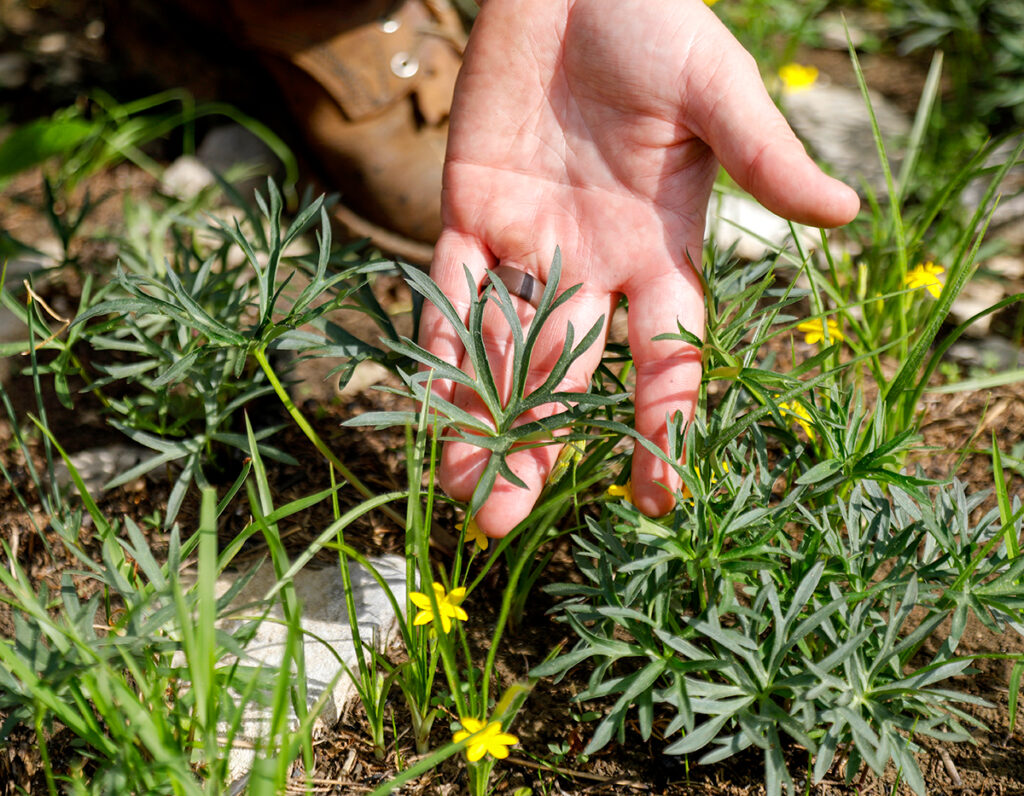
Photo by Freedom Light Productions
“They were our most diverse ecosystems, and they dominated the state,” Lybarger says, “but we’ve lost 99 percent of them.” That decline began after European settlers arrived and started converting flat, open, fertile grasslands into cropland and pastures. By the early 1900s, most of the state’s grasslands had been replaced by farms, forests and development.
Today, nearly 70 percent — some 23 million acres — of Alabama’s undeveloped landmass is forested, which makes it hard to envision its former grassland status much less envision that cities like Montgomery and Huntsville sit upon what once were open prairies and savannas. It’s no wonder, then, that few people today know about Alabama’s grassland heritage. In fact, despite being a lifelong outdoorsman with an intimate knowledge of his own Morgan County landscape, Lybarger didn’t know about its grassland heritage until after he graduated from Alabama A&M University with a degree in forestry and wildlife management.
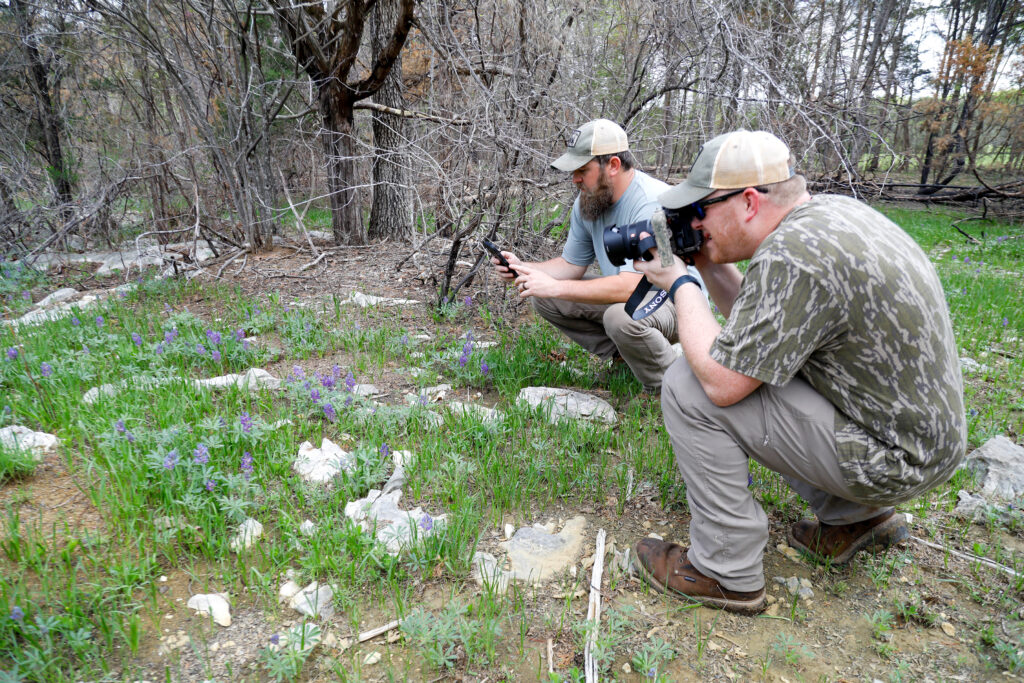
Interest started early
Lybarger’s interest in the out-of-doors began almost at birth after his parents discovered the benefits of letting their active can’t-sit-still son spend time and energy playing outside. “I was probably feral and couldn’t be contained,” he says. “So they let me loose out there and it was my place to explore and have fun. I can still remember every trail and tree and everything I did
out there.”
Lybarger’s father, Scott, also helped deepen his son’s outdoor connections by taking him hunting and fishing and mentoring him in Boy Scouts all the way through to the rank of Eagle Scout. After earning his degree from A&M in 2017, Lybarger took to the woods as a private forester, a job primarily focused on trees. But during his travels to consult with landowners, Lybarger started noticing showy wildflowers and other interesting plants growing along backroads and in the woods and pastures on his
clients’ properties.
“I became obsessed with learning the names of these native plants that had been around me all this time but that I hadn’t noticed before,” he says.
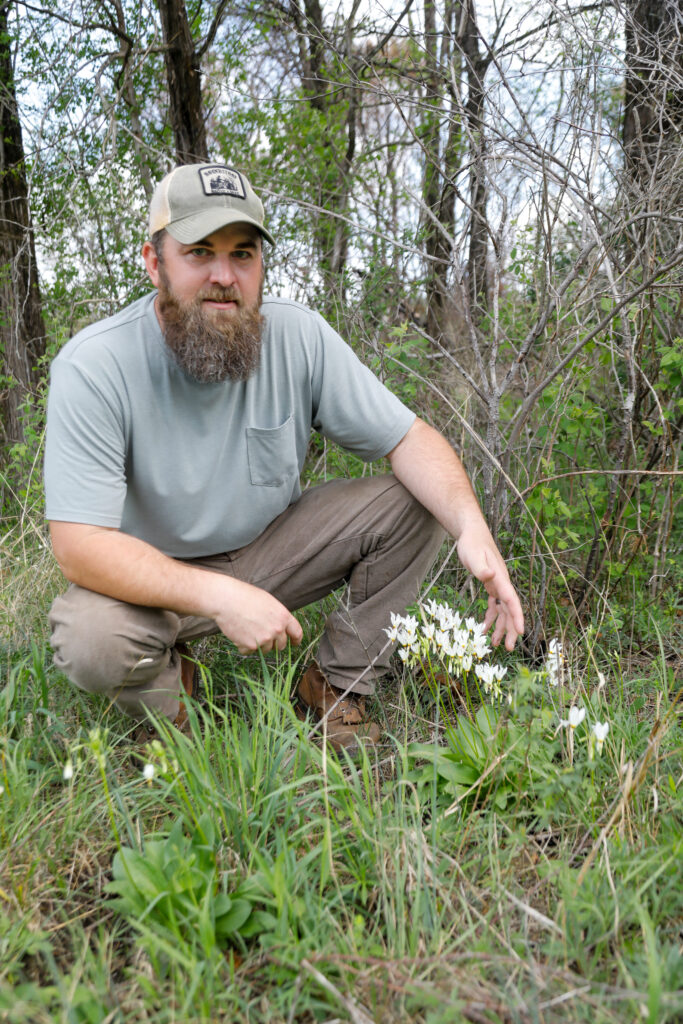
Using the iNaturalist app to identify them, Lybarger discovered that many were rare and endangered species, some of which had never before been documented in Alabama. Among Lybarger’s many discoveries are the first documented population of rare purple milkweed in the state and a Durand oak located on property far outside its usual range.
“The rarest plant I ever found was the Porter’s goldenrod,” he says. When he discovered it — “rediscovered” it, as he says — in 2020 on a site in Morgan County, it was only the second known existing population of Porter’s goldenrod in the world “and it was growing in the city limits of Hartselle!”
Lybarger also soon learned that many of these plants were remnants of Alabama’s former grasslands, which he hadn’t realized ever existed in the state, so he began educating himself on this little-known ecological history. A personal tragedy — the sudden death of his father — also deepened Lybarger’s obsession with and commitment to the plants.
“He died in 2017 while I was on my honeymoon,” Lybarger says. “That was hard, and I spent a lot of the next year just walking in the woods, and then I started collecting seeds from these native plants I was learning more about.”
Social media following takes off
Lybarger and his wife, Anna, planted these seeds and soon had the equivalent of a small native plant nursery at their house. Kyle also began posting photos of his plant finds on Facebook and then started making short TikTok videos of his adventures and discoveries. “The first two or three were really bad,” he says of those reels, but they got better and Lybarger soon attracted a small online following.
“I began to post one every few days, sometimes multiple times a day,” he says. “I realized how much I enjoyed not just finding these plants myself but spreading the word.”
Taking the advice of another local social media celebrity — one with more than a billion followers — Lybarger created the Native Habitat Project as his online brand and began posting on multiple channels: TikTok, Facebook, Instagram and YouTube. Within five weeks, the NHP “brand” had taken off and today has some 1.5 million followers who check in regularly to view Lybarger’s entertaining, informative and always passionate posts.
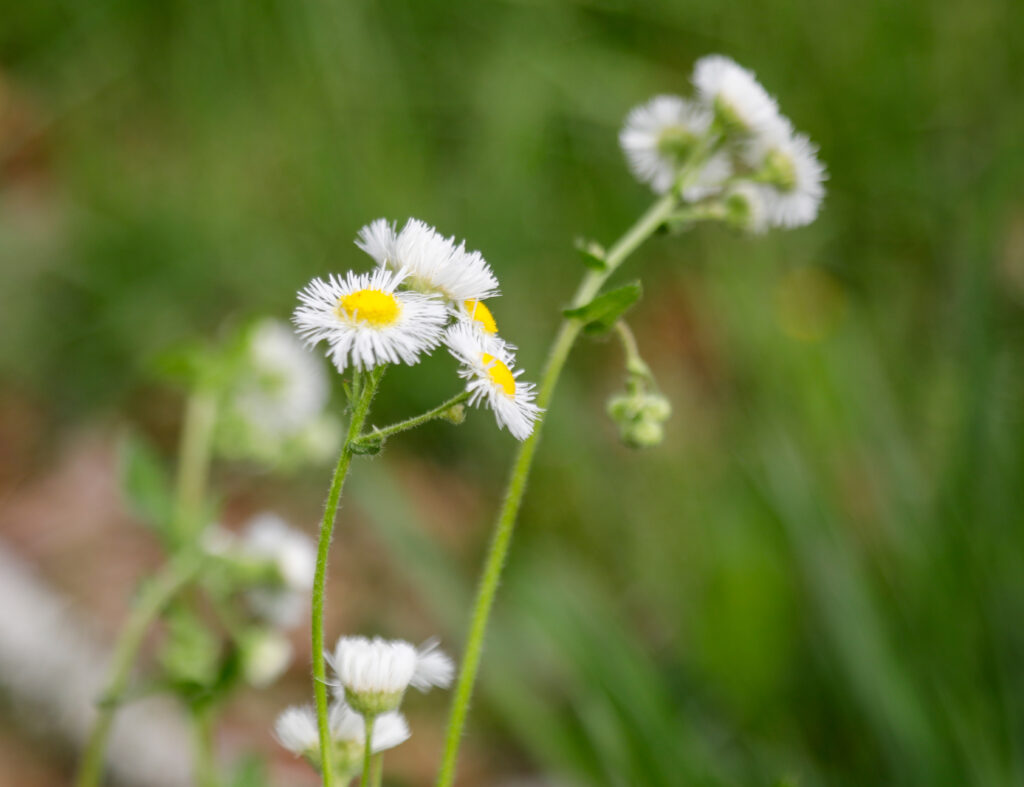
Those posts usually feature the bearded, baseball cap-wearing 31-year-old Lybarger as he explores weedy roadsides, woods, pastures and other urban and rural sites. And it’s obvious from the responses to these videos that he’s struck a chord.
“I can see that other people care about it, too; they care about the land, but they don’t have anyone to teach them about it or teach them how to maintain it,” he says.
With the help of his followers and supporters on Patreon, Lybarger and his two partners, Jake Brown and Allen Summerford, have turned the NHP (nativehabitatproject.com) into a fulltime job. Together they offer consulting and management services for landowners interested in preserving and reestablishing native habitats. They are also dedicated to educating the public about the importance of these habitats —to helping more and more people see the grasslands for the trees.
“You can’t appreciate what you don’t know about, so putting a spotlight on the beauty and value of these amazing places is what this is all about,” he says. It’s also about preserving what’s left of these ecosystems for his own children, 11-year-old Ellie and 2-year-old Walker, and for generations to come. “This isn’t ours, it’s theirs.”
And there’s a lot that we all can do to ensure these plants and ecosystems are protected and restored for posterity, which begins with something Lybarger discovered back in 2017 — the importance of paying attention.
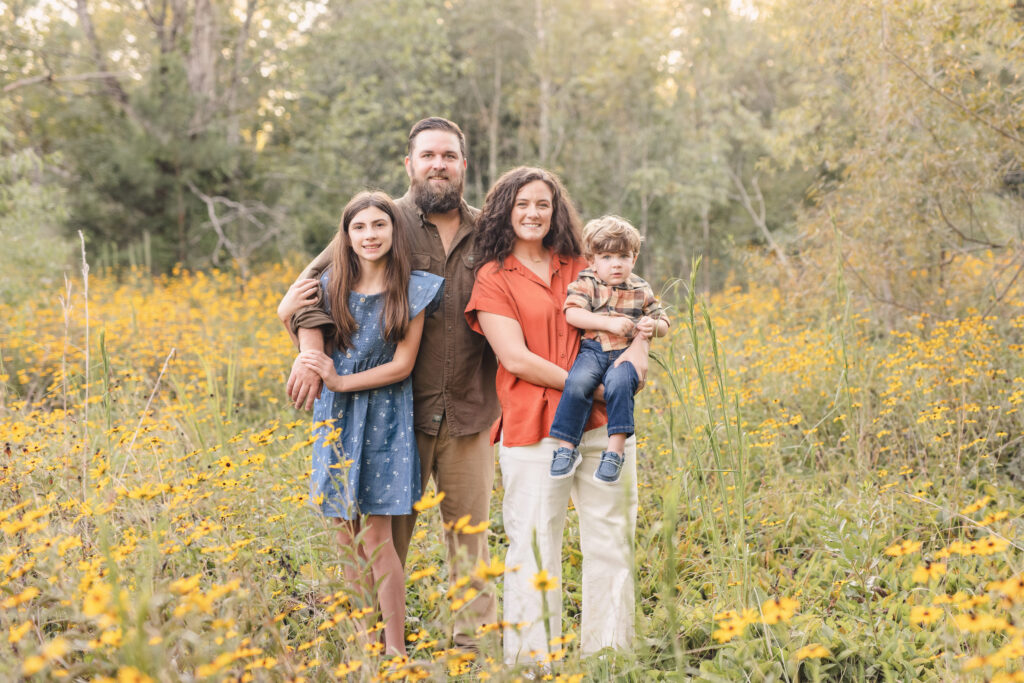
Hiding in plain sight
Because these plants often hide in plain sight along roadsides, in unsprayed powerlines and even around derelict buildings and trash piles — places that are too wet, rocky, steep or overgrown to easily mow or cultivate — it’s easy to overlook them. The same goes for our own yards.
“The rarest plant I have ever seen (the Porter’s goldenrod) was in a half-acre lot between two trees where they couldn’t get the lawnmower in there,” he says.
Now, though, as more and more farmland and previously neglected pieces of land are being developed into commercial and residential sites, these hidden remnant populations are at even greater risk. However, Lybarger believes they can be saved; it’s just a matter of recognizing and protecting them before it’s too late. And that begins with seeing them.
“Pay attention to your surroundings, and if you see a flower or plant you don’t recognize, take a picture of it. You can use an app to identify it,” he tells viewers in his reels. Whether it’s in your yard, on your farm and forestland or in a weedy roadside patch, that plant could be the beginning of something special.
“If you bring back one species, others can follow, and you can reestablish a really nice prairie,” Lybarger says. You may also better understand what shows in every one of Lybarger’s posts.
“I have an all-encompassing love of these plants,” he says. “I have a hard time putting it in words, but it is what I enjoy doing the most.”

